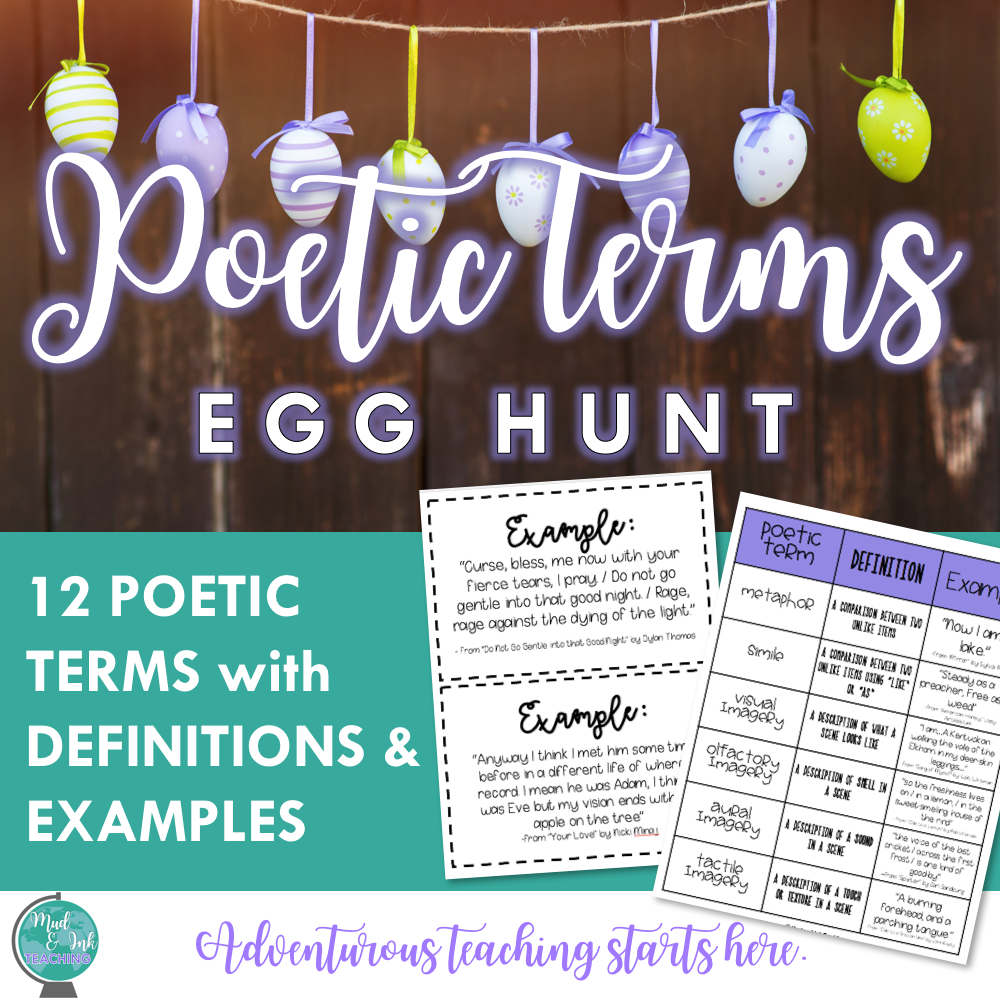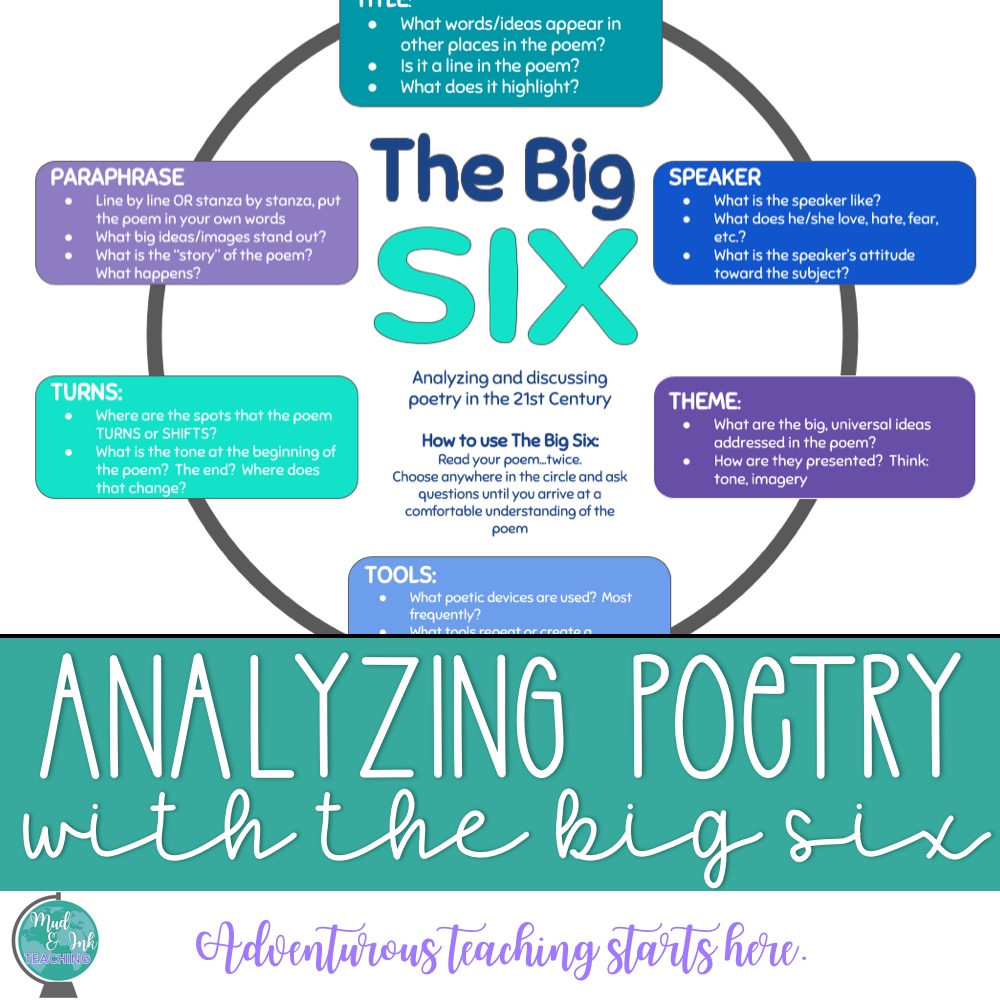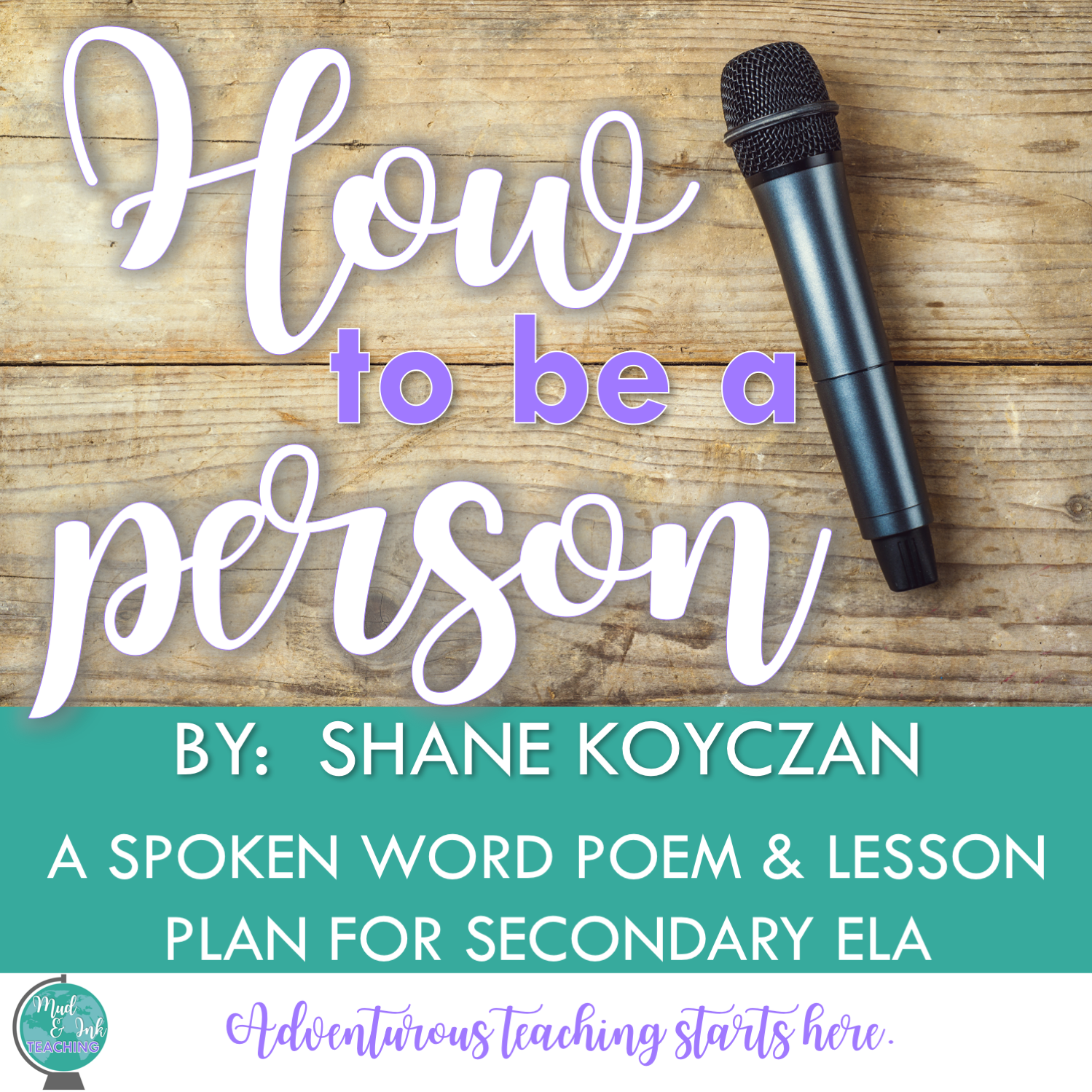The Cento Poem
POETRY & PEDAGOGY: THE CENTO POEM
Lesson Ideas for “Patchwork” Poetry
I love the art and beauty of poetry as a person, not just as a teacher. I initially fell in love with poetry in high school thanks to the influence of some truly phenomenal English teachers, but everything changed for me when I got to my freshman year creative writing experience.
At my university, we had something called “May Term”. For students who wanted to take an extra course before going home for the summer (I think we took four in the fall semester and four in the spring), we could elect to take a May Term - a three week long class that met for about four hours a day Monday through Thursday. Man, do I miss college! So to get a leg up, I enrolled in May Term Creative Writing as a freshman. This meant that I had nothing but poetry and beautiful prose four days a week for an entire month. It. Was. A. DREAM.
One thing I learned in that class was how important it was to explore and write poetry out of my comfort zone and to also write in styles and forms that didn’t already feel like they were my “type” of poetry. The more I did things that I didn’t know, the better I wrote!
And the second thing that I learned about poetry was that sometimes the composition of the poem can be more interesting, more challenging, and more fascinating that writing the words. In all of my previous poetry experiences, teachers had always focused on the language and the writing of the poem. When I learned about the CENTO, all of that went out the window.
The word CENTO means “patchwork”. The goal of a cento poem is to pull together lines and phrases from the writers and world around you and arrange them in a meaningful way to create something new. If scraps of fabric can form a brand new object (a quilt), then so can language form a brand new poem.
For an example, I showed my students what could happen if I pulled some of my favorite lines from some of my favorite poets, songs, artists, and plays. These lines don’t necessarily have anything in common, but that would be my challenge later as I attempted a cento with these lines:
She’s all states, and all princes, I, Nothing else is. (Donne)
About suffering they were never wrong (Auden)
She let him look, sure that he wouldn’t see (Frost)
The lights begin to twinkle from the rocks (Tennyson)
A man and a woman and a blackbird (Stevens)
Old age should burn and rave at close of day (Thomas)
I keep inside a pumpkin shell (Cisneros)
These hips have never been enslaved (Clifton)
Kicking the leaves, I uncover the lids of graves (Haas)
and my skin has betrayed me (Lorde)
He is one of them now (Oliver)
But that’s the point: he musn’t know! (Ibsen, “A Doll’s House”)
That’s just Chicago, though (Hansberry, “A Raisin in the Sun”)
Thinking from a Psychoanalytic Perspective
The potent poison quite o’er-crows my spirit (Hamlet)
Nobody in the lane, and nothing, nothing but blackberries (Plath)
To children ardent for some desperate glory (Owen)
It hides our cheeks and shades our eyes (Dunbar)
The yellow fog that rubs its back upon the window-panes (Eliot)
I was six when my mother taught me the art of invisible strength. (Tan)
So, with brave, fearless clicks of the keyboard and mouse, I took these twenty lines, cut, pasted, and rearranged them (right in front of the kids!) to compose the following poem (masterpiece):
A Cento
By Amanda Cardenas
But that’s the point: he musn’t know!
Thinking from a Psychoanalytic Perspective
my skin has betrayed me
It hides our cheeks and shades our eyes
About suffering they were never wrong
That’s just Chicago, though
I was six when my mother taught me the art of invisible strength
The yellow fog that rubs its back upon the window-panes
Nobody in the lane, and nothing, nothing but blackberries
Old age should burn and rave at close of day
A man and a woman and a blackbird
To children ardent for some desperate glory
The lights begin to twinkle from the rocks
Kicking the leaves, I uncover the lids of graves
These hips have never been enslaved
She’s all states, and all princes, I,
let him look, sure that he wouldn’t see
I keep inside a pumpkin shell
The potent poison quite o’er-crows my spiritHe is one of them now
Nothing else is.
We then took this experiment a few steps further. What would happen if we crafted centos that contained lines all from the same source? Could we discover a theme? An artist’s thumbprint? So I set off to investigate. The following cento is composed only of lines from Nicki Minaj songs. It turns out, not so surprisingly, that most of it is complete and total nonsense, which begs the question...
Why Does Nicki Minaj Make More Money Than Your Teacher?
By Amanda Cardenas
Yes my name is Roman, last name is Zolanski
I ain't paying my rent this month
We're overdosing
I mean my,
my, my, my...
you're like pelican
fly!
Let's go to the beach
beach!
Look bubbles,
go back to your habitat
Let's go get away
Rip it off, no jokin'
Like your name Hulk Hogan
He can tell I ain't missing no meals
Quack quack to a duck and a chicken too
Put the hyena in a freakin' zoo!
Raah raah like a dungeon dragon
Can't stand it, but I still love you
Hang it up, flatscreen
…plasma…hey Nicki, hey Nicki
…asthma
I pull up and I'm stuntin' but I ain't a stuntman
Might pull up in a Porsche, no boxster though
My ice is so cold, it should come on a cone
If you could turn back time…Cher
You used to be here now you gone…Nair
You a stupid hoe, you a, you a stupid hoeSources: All text above belongs to Niki Manaj
This exercise in poetry is also really useful when teaching a novel. One assignment I love to give is the Novel Cento. In this assignment, I ask students to choose a character or theme from the novel we are reading. Then, I send them off with a highlighter in hand to go back through the story looking for lines that are the best representations of that character or theme. Students create a nice long list (20 lines or more is best!) and then take those lines to compose their poem. I also have had students compose these poems over a weekend where they’ve collected snippets of conversations that they overhear, lines and phrases from the places they go, and any other language they encounter. Then, on Monday, they write for me “The Weekend Cento” and we discuss what their poems reveal about their environments.
What I love about teaching with the cento is that it takes away the fear of “writing” for students who are intimidated when asked to write a poem. This form seems approachable for almost all kids and I tend to get high buy-in. It also gives you a chance to teach the nuances of stanzas, line breaks, and building the emotional curve of a poem without the stress of ALSO writing the words of the poem itself.
If you try the cento in your classroom, be sure to come back and tell us all about it! I’d love to hear how this gave your students a new opportunity for critical thinking, artistic expression, and even some end of unit assessment options! Also, be sure to check out my Amazon Poetry Favorites - each of these books has been INVALUABLE in my poetry teaching experience!























































